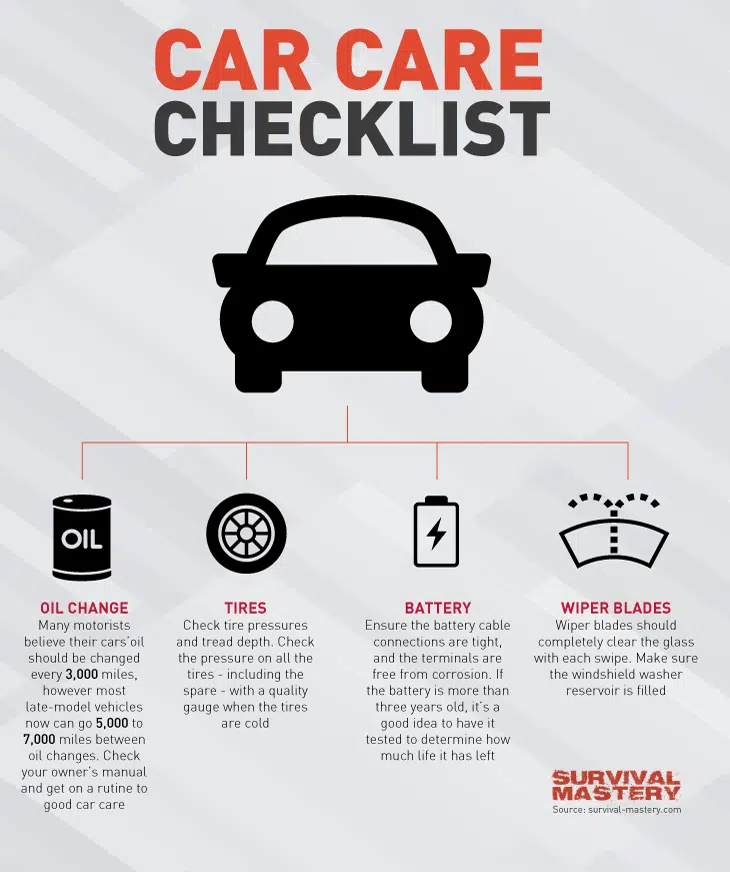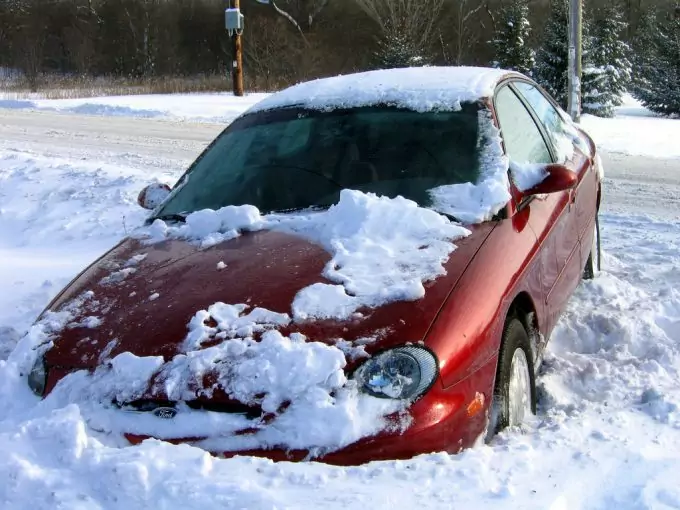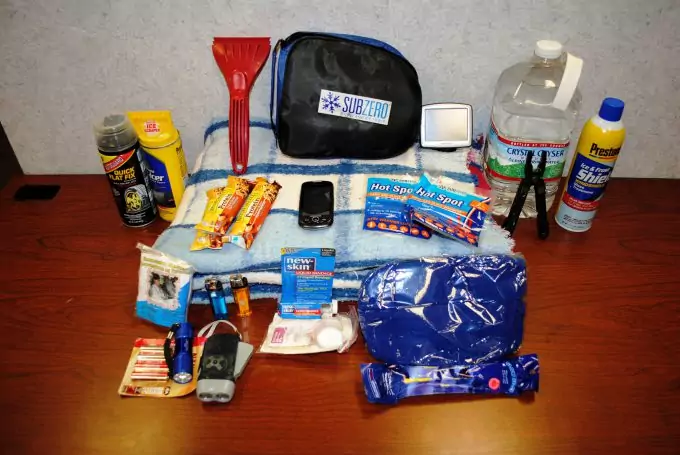Winter is a beautiful season with lots of fun activities and challenges. As a driver, you can agree that winter is not the easiest season of all when it comes to keeping the car on the road. Today, we are going to talk about winter driving tips that can be helpful when the white coat of snow comes down. We all know that the frost queen loves to play with motorists and their patience and she enjoys testing their skills and cars.
[the_ad_placement id=”in-text-1-type-r”]Who doesn’t love skiing or sledding in the white snow? You load up your entire family in the car and start driving to a winter destination where you’re supposed to have the best weekend ever. Sitting in front of the fireplace, in the evening, away from the cold outside, looking through the window and admiring the coat of snow, sliding down the slope like a gazelle on steep rocks, having fun with family and friends; this is what winter should be all about.
Still, if you don’t know about winter driving conditions and how to prepare the car for such conditions, you might not get there. Your winter vacation can shift and become a winter nightmare in a matter of seconds.
During winter, it pays to be prepared. Before getting in your car and leaving home you need to make a complete check. You need to make sure that everything is according to winter driving safety regulations. Those rules are not there just to annoy you, they exist for a reason. Just consider this situation: you ignore every advice and regulation and leave on the road, totally unprepared for winter.
All of the sudden the road becomes slippery and you can’t keep the car on the road anymore. As you slide outside the lanes, you hook another car and take it with you. Now, they might have been prepared, but because of your ignorance and unpreparedness, they also have to suffer. Are you ready for such a responsibility over your head?
Winter driving safety tips don’t have to be ignored by anyone. It is your part, as responsible adult, with a driver’s license, to keep highways and streets safe. Being a good, responsible citizen can save lives. If you are responsible enough to take care of your car during winter, rescue teams will have one less case and maintenance crews will be able to do their jobs without having to fix your mistakes. A little bit of planning ahead can save you a lot of trouble.
How to prepare your car for winter
As we said before, winter is one of the most challenging seasons for both people and cars. Cars have to go through blizzards, frosts, snow, big temperature differences and so on. If there are mechanical or electrical problems, winter is the season when your car will break down and let you hanging at the side of the road, in the middle of nowhere. If this would have happened during summer, it wouldn’t have been such a big deal. You could look at the stars and enjoy the cricket’s song in the grass.
During winter, things change radically: if the engine breaks down and the car won’t start you can’t get warm. Rescue teams or the friend you called might be hours away and you might freeze while waiting. That’s why, before the first snow, you should have your car checked out, so you can repair anything that needs repairing.

Every mechanic will know what to look for but if you want to do this by yourself, we put together a small list with what you should look for:
- Tire pressure – people seem to forget about this small aspect. When the temperature drops, the pressure in your tires also drops. If you don’t check it in time you might have problems handling the car because the tires are too low. Also, have you ever tried to change a flat during a blizzard? It’s not fun.
- Change your tires – if you don’t use all-season tires, it’s time to switch them as soon as you feel the air is getting colder. Also make sure that they are still useable (if you used them last winter). Authorities recommend replacing the tires before the tread depth gets to 1.5 mm (the minimum depth allowed). It was demonstrated that tires with 3 mm deep tread can stop a car in a 25% shorter distance than a 1.5 mm does on wet pavement. You do the math.
- Make sure your wheels are tightly screwed and there are no loose nuts. This action is highly recommended after you’ve changed the tires.
- Car battery – the little box that gives life to your car. During winter, old batteries may have problems starting or they may drop dead completely. Make sure your battery is prepared for the cold times to come.
- Check your windshield washer fluid’s level and make sure to switch to winter fluid. The one you used during summer will freeze as soon the temperature drops below zero and you won’t be able to clean your windshield.
- Don’t forget about windshield wipers, they may be small but they are not insignificant. Put on some winter wipers, they are great in keeping the ice from the blade.
- Brakes – important during all seasons but more sensible during winter. Check for wear and make sure your system is working in conditions of winter by performing a quick test. You don’t want to be on the highway, on heavy snow and suddenly realize your breaks aren’t working.
- Check all your lights and replace the burnt bulbs. You are going to need your lights working to the maximum to make yourself visible to other drivers in heavy snow. Also you need to see where you’re going. If there’s snow on the street sometimes is hard to see where the road is. Well, this is going to be even harder with no lights.
- Check your defrosters for both front and back. You need clear visibility in order to drive responsibly.
Before you get on the road
Now that you checked the car and everything is in order, you are ready to go. Before getting in the car, you still need to follow a few steps to make sure you respect the winter driving conditions:
- Clean and defrost all your windows so your visibility won’t be obstructed. Do the same thing with mirrors and lights;
- Make sure that your gas tank is close to full. You don’t want to push the car to the closest gas station when the temperature is below zero;
- Start your heat and let the car warm up before you actually start driving;
- Make sure your exhaust pipe is not blocked by snow or ice;
- Check if there are no frozen liquids or frozen vital elements. If you hear weird noises don’t go anywhere until you figure it out.
After everything is checked and in order, buckle up and start your journey. Remember, drive safe and don’t forget that you are driving in winter conditions.
How to travel safe in winter driving conditions
When the pavement is dry and the sun is shining over your head you might be tempted to bend a few driving rules. We don’t say it’s something we would recommend but many drivers don’t really seem to care that much about driving safe when the weather allows it. The data of the problem change completely during winter.
[the_ad_placement id=”in-text-2-type-r”]You must respect a few very important driving rules if you want you and your driving partners to get home safely:
- Always stay in control! If your car starts to skid, don’t panic and try to steer the car to a safe place where there are no other moving cars. Don’t try to break and do not accelerate! When you feel the tires have some grip you can try to break or accelerate gently, according to the situation.
- Slow down and stay alert! When everything is white around you it’s very hard to see what’s going on in front of you. That’s why a pair of sun glasses should always be in your glove compartment. Avoid driving if you’re tired and keep in mind that those speed limits are for ideal driving conditions.
- Maintain a safe distance towards the car in front. This way, if the driver in front of you breaks suddenly, you won’t hit his rear end. Also make sure that your seat belt is on all the time.
- Leave the radio on so you can get news about the weather. If you hear about blocked roads, call local authorities and ask if it’s safe to go on.
- Always have a plan B! Plan ahead and ask yourself what you need to do if you can’t reach your destination. Find a location in the middle where you can get accommodation if necessary.
- Your steering moves should be smooth and precise. If you are too rush with your steering you might skid.
- Don’t engage in passing other cars unless it is allowed and safe. Engaging in risky passing, during winter driving conditions, can put your life and the life of people in other cars in danger.
- Always signal a turn or change of lane in time to allow drivers behind you to react accordingly.
- Wear comfortable shoes that are fit for driving in the winter. Make sure your feet won’t slip on the pedals when you get inside the car.
These are the basic winter driving safety tips we wanted to refresh in your memory.

They are of extreme importance and every good driver should follow them for themselves and for the sake of the others.
What do to when you’re stuck in the snow?
There are an infinite number of scenarios where you can get stranded or stuck in the snow: your car skid and you drove off the road, the road got closed and there’s nowhere to go, you run out of gas or your car broke down. These are just a few, but the main conclusion is that you are surrounded by snow and you can’t leave the area.

If this happens, the best thing you can do is to stay calm and remember the recommended behavior in such a situation.
- First of all, try to get as less exposure to cold as possible. Cold weather is not a friend of the heart so make sure you stay warm and out of cold;
- If there’s nothing you can do, like shoveling the car out, stay inside. Also, don’t leave the car if there’s a blizzard. You might not find it when you return; the blizzard can be very confusing.
- Try to make the car as visible as possible: turn on the lights and tie a colored piece of cloth to your antenna. People will see you faster this way. If you have flares, set them up.
- Don’t leave your engine running all the time, start it only when it gets cold inside. This way you’ll conserve fuel (you never know how long you’ll be trapped there). Crack the windows to avoid carbon monoxide build up inside.
- Share a blanket with whoever is in the car with you. This way you will conserve your body heat better. If you’re alone, snuggle in the blanket as well as you can. However, when it comes to blankets, you should have an appropriate one and we have a detailed article on the best survival blanket you could own.
- Cover your head and neck (you lose a lot of heat through there).
- Make sure you are not starting to freeze. Check your extremities like fingers and toes. Because your body starts to adjust to the low temperature you might not feel the beginning of frostbite.
- Don’t fall asleep if you’re alone in the car. If you don’t get the engine running from time to time, in order to get heat, you might wake up in the hospital.
- Move around and try to keep the blood flowing. This will help you stay alert and warm for a longer period of time.
- Contact the authorities and let them know where you are and your condition. Keep watch for emergency vehicles and try to get their attention when you spot them.
Even though you are a responsible driver and you follow all the winter driving safety tips, bad things happen. You need to be prepared to survive in the middle of nowhere, surrounded by snow until the rescue teams reach you. In order to do that, you must always have an emergency winter driving kit in your car and a tank full of gas. These two can save your life.
Winter emergency driving kit
One of the most important winter driving safety tips is to always have an emergency kit with you. You simply put it in your car and you forget about it until you need it. You don’t have to carry it, it won’t take up much space and in case of need you are prepared.
[the_ad_placement id=”in-text-3-type-r”]Let’s see what a good, responsible driver should include in the winter emergency kit:
- A shovel is always recommended during winter, which is why it’s best to include it in the kit;
- A tow rope and a chain can be of use if you skid and can’t get out. Also someone else might need help and you will be able to offer your assistance;
- Road flares are perfect if you want to indicate your location using visual signs. Emergency lights are also a good choice;
- A flashlight with batteries and spare batteries also come in handy- read more about the best LED flashlight (we recommend LED flashlights because they don’t run out as fast as other products).
- Warm blankets and an extra round of clothes and shoes can be very helpful;
- A small tool kit can be very useful if something breaks down. It should include screwdrivers, booster cables, and anything else you might need – see more about this in our car safety kit article.
- Traction aid material like sand and salt or traction mats;
- Non-perishable food like energy bars, canned food, chocolate, nuts, everything that will help you boost your energy level;
- Fresh water;
- Candles and matches;
- A first aid kit (legally this should already be in the car regardless of season) – besides the standard one, you should put together your own – you can find out more in our article about how to choose the best first aid kit.
- Windshield wiper fluid for spare, just in case you run out;
- Paper towels;
- An ice scraper and a snow brush;
- Tire chains;
- A road map in case the GPS loses signal or stops working. Using the map you’ll know how to let rescue teams where to find you. Add in a compass, so you can read the map easier – we have a great guide on map reading that you shouldn’t ignore.
- An extra cell phone or an extra battery for your current cell phone;
These are the basic items you should have in the car during winter. If you consider there are others you might need, feel free to add them to the list.

As you can see, on winter season we have to ready for the unexpected, especially during long trips on heavy weather. Besides making sure that your car is winter-ready you should always tell a friend where you’re going and what route you’re taking. Establish a communication rule: if you don’t check in for a certain period of time, people should start worrying. If you can’t contact the authorities, your friend will.
Winter is a wonderful and magical season but it can be a real problem for motorists. Make sure you respect the winter driving safety rules and your car is completely equipped for the adventure you are about to start. Winter driving conditions transform every drive in a true adventure.






I pay particular attention to the car’s tires during winter. I drive slow and take my time to arrive safely to where I’m going. My safety and my family’s safety is worth being a little late, when necessary. I share your article on Reddit.
Thank you, Marco, for sharing our article on Reddit, and you should maintain winter safety precautions.
I have a few tips when it comes to driving in winter.
– I drive as if I suddenly have no brakes
– I refrain from making any sudden movement
– I don’t jerk the wheel
– I don’t slam on the breaks
– I never floor the pedal.
Peter,
These are great tips. Thank you for sharing this with us.
David